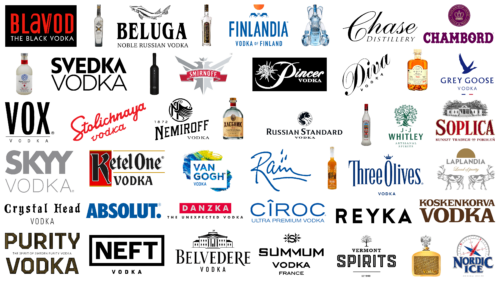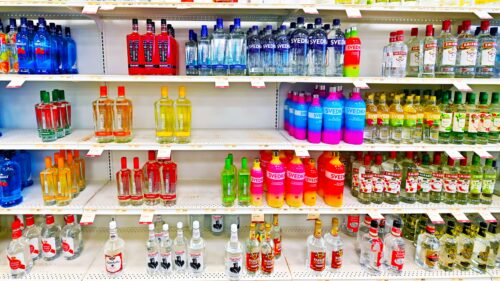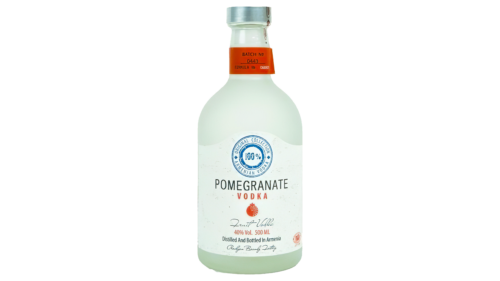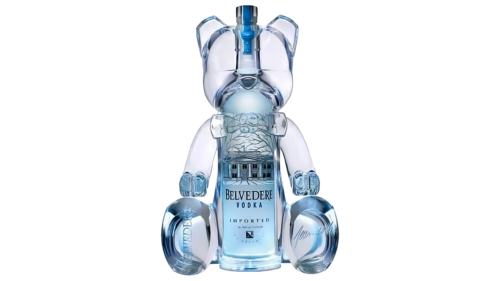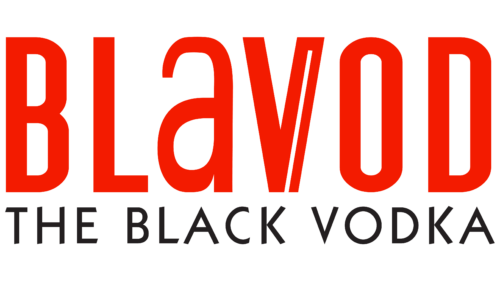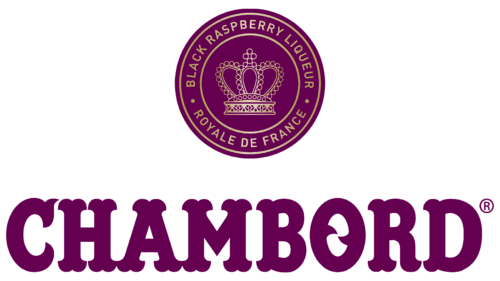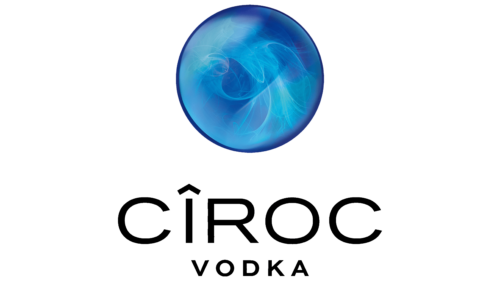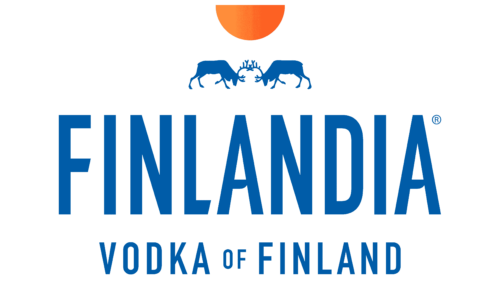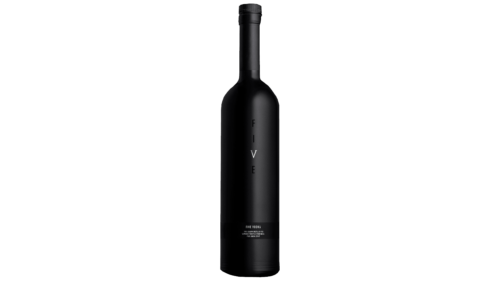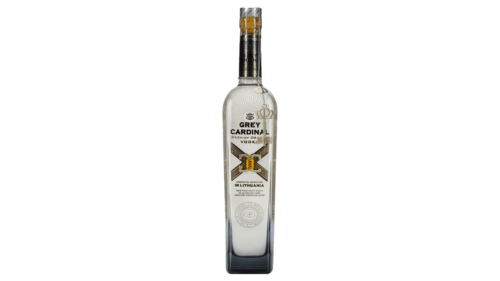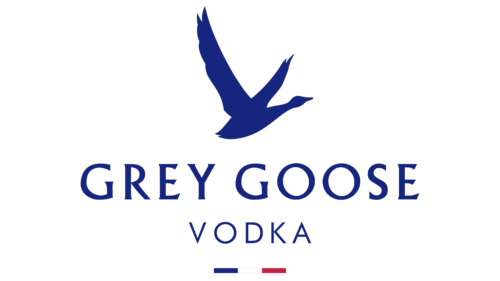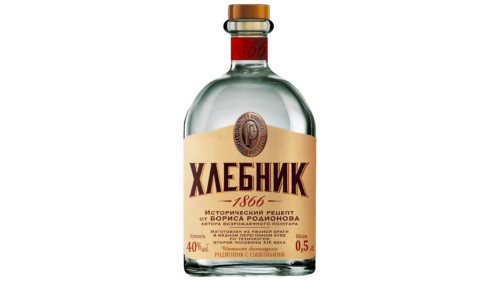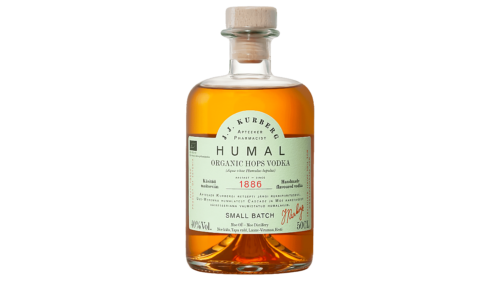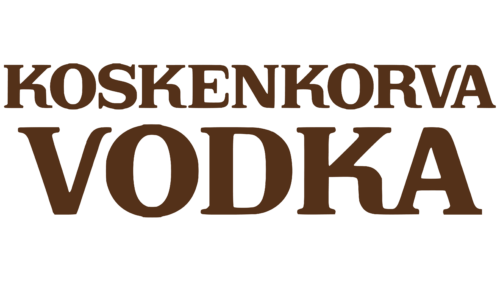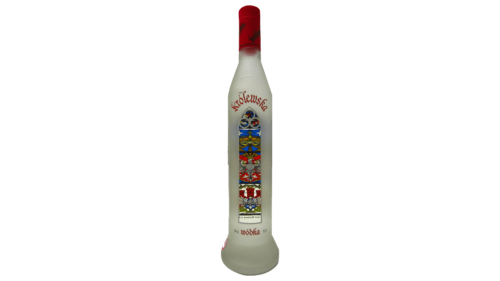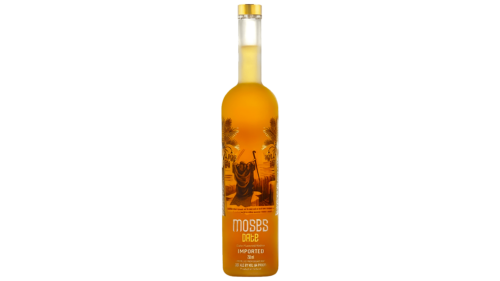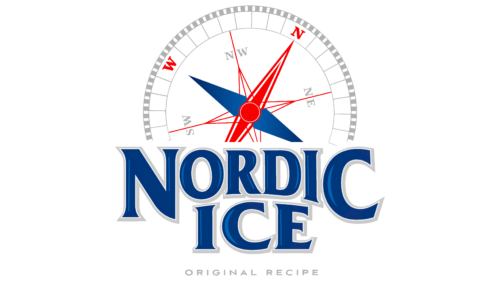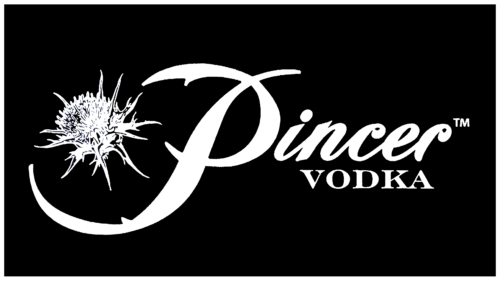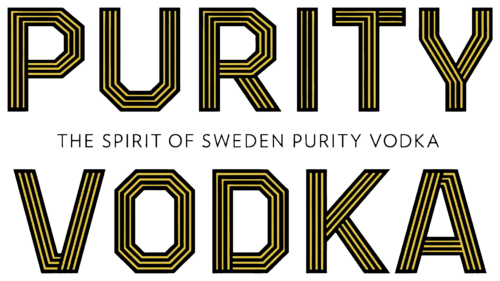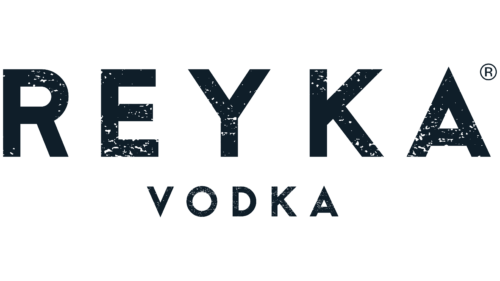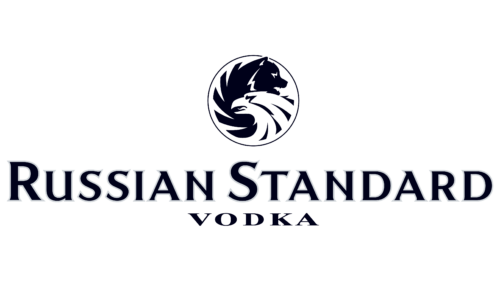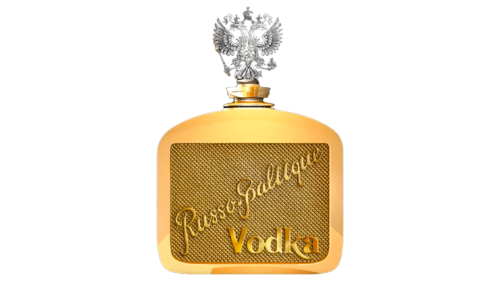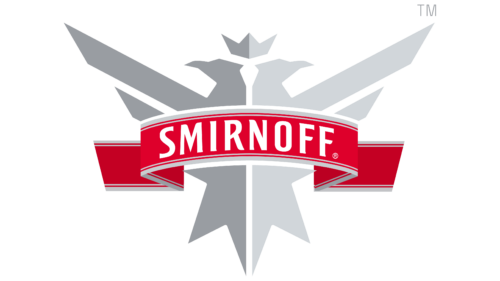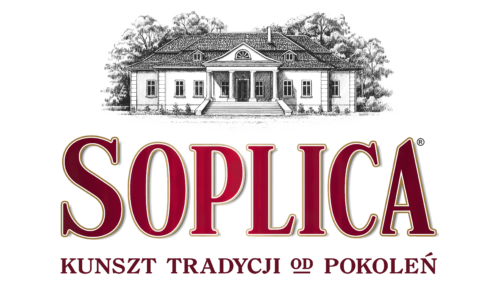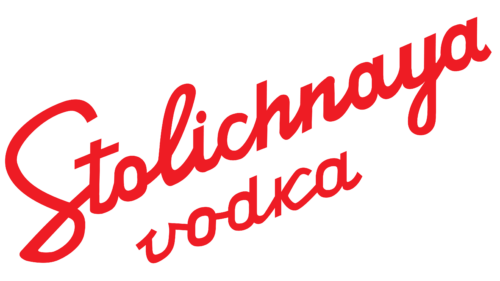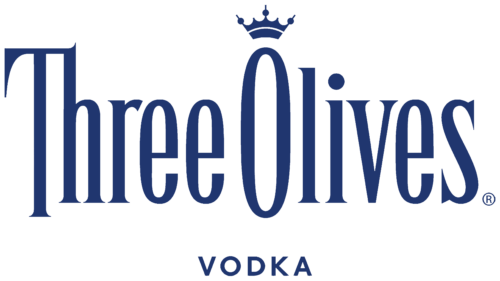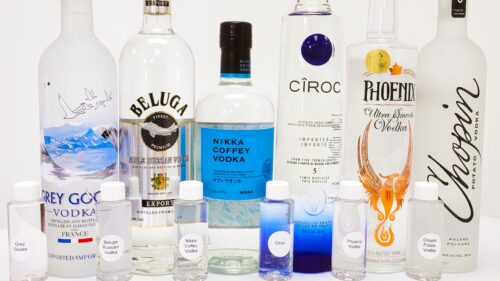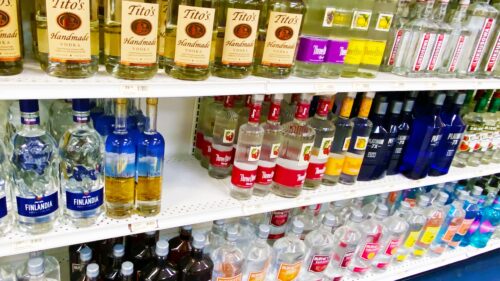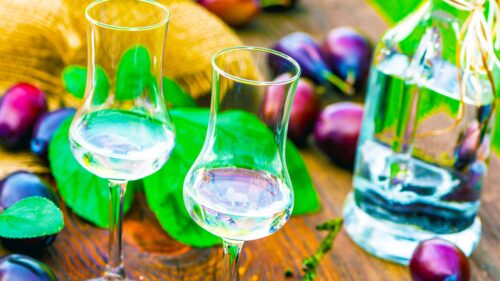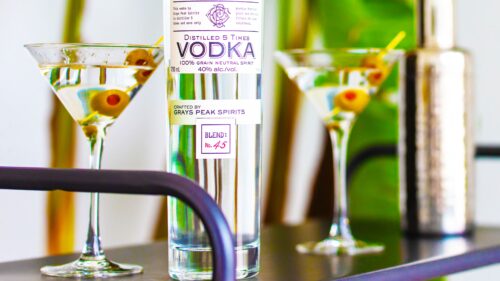Vodka ranks second only to whisky among the world’s best-selling spirits. More than 126 million cases are bought every year, not counting moonshine. And in terms of strength, it has no equal at all. For example, the Polish brand Wratislavia Spirytus consists of 96% alcohol.
What is vodka?
In simple terms, vodka is diluted ethyl alcohol obtained from raw food materials. Today, vodka is produced and consumed all over the world and is used in a wide range of cocktails and mixed drinks. Due to its relatively neutral taste and aroma, vodka is also commonly used as a base spirit for flavored varieties and for making infusions. However, it is important to consume vodka in moderation, as excessive consumption can lead to adverse health effects.
Each country has its own requirements for the base of the drink. In Ukraine, alcohol is distilled from grain crops. In Belarus, potatoes are used in addition to grain, and in Poland and Germany, only potatoes are used. In other EU countries and in America, any vegetable raw material is allowed. For example, in the state of Minnesota, you can taste beet alcohol.
The choice of raw materials affects the taste:
- Wheat makes the drink soft, with notes of bread and a citrus aftertaste.
- Barley gives a feeling of fullness with an apple aftertaste.
- Corn – sweetness, and flavor of flowers.
- Rye is spicy, with vegetable undertones.
- Potatoes give a buttery and earthy flavor.
In connection with the raw materials, the requirements for the strength of the drink differ. In CIS countries, it is 40-45%. Here, there is a concept of fortified vodka with indicators of 50-56%. In the European Union, this indicator starts from 37.5% and has no final bar. This allowed the company Wratislavia Spirytus not to breed potato and grain raw materials.
The brewing process proceeds roughly as follows:
- The fermented base undergoes rectification or distillation, where the pure alcohol is separated from impurities. As a result of repeated evaporation and condensation, a product with a strength of up to 96% is obtained.
- The alcohol is mixed with pre-treated water.
- The resulting composition is filtered.
- Flavored alcohols (infused with herbs, pepper, honey, rye bread) are added.
Finally, the fully finished product is filtered again and bottled.
Ideally, pure alcohol and water, when mixed together, give a slightly sweet substance that is mildly drinkable. The presence of aftertaste, bitterness, and pungent odor in vodka depends on the following:
- The degree and method of purification.
- The addition of flavored alcohol.
The taste is judged on the quality of the brand. Each manufacturer has its own secrets for obtaining alcohol, water purification, and water-alcohol mixture.
- Alcohol
There are five types of rectified alcohol. They all have a strength of 96.3% but differ in the amount of impurities of methanol, esters, free acids, and fusel oils. Impurities impair flavor and can be harmful to health.
The most “polluted” is alcohol of the highest purification. Cheap vodka is made on its basis. Premium-class drinks are made from “Lux” and “Alpha” alcohols. The first is made from grain and potatoes, and the second – only from grain and is thoroughly purified. It is “Alpha” that is included in the composition of the best brands. In the middle price category – products made from alcohol “Extra.”
- Water
Water for blending is obtained either from natural sources or filtered ordinary water. The second is called “rectified” or “specially prepared”.
The first option is added to premium beverages. Water from mountain springs and wells contains calcium and magnesium salts, which improve the flavor. Sometimes special water, better than from natural sources, is added to vodka. Then, the product becomes ultra-premium. For example, Iceberg vodka is made from alcohol and melted iceberg, and 42Below is made from the purest water on the planet, extracted in New Zealand.
Some producers take water from wells and pass it through quartz sand, achieving the highest possible purity of the liquid. This also affects the quality of the product.
- Filtration
When mixing alcohol and water, harmful impurities are again formed. These are removed by filtration. Sand filter, activated carbon, treatment with silver, pearls, and milk – each manufacturer chooses its own variant.
For example, when passing through charcoal, a small amount of ether is formed, which removes the sharp alcoholic odor. The activity of reactions increases if a little silver is added to the surface of the charcoal particles. Milk also binds and precipitates unwanted impurities.
The more degrees of purification, the milder the flavor of the product.
To summarize, quality vodka is a product made from “Alpha” and “Lux” alcohol, diluted with natural water and underwent maximum filtration.
Absolut (Sweden)
This distillate is among the top three bitters and is sold in 120 countries around the world. At one time, the sale of the state producer to the Pernod Ricard concern allowed to cover the country’s foreign debt. The first drink appeared at the end of the XIX century and was characterized by continuous multiple distillation.
The logo, made in large letters with a dot, speaks of the fullness of flavor and superiority over competitors. The bottle is the basis for various artistic additions decorating the drink. Dried fruits and cereals, which form the basis of the alcoholic bouquet, are supplemented with artesian water.
Armenia Pomegranate (Armenia)
By the appearance and taste of the Armenian composition from the company Armenia Wine, it is not immediately possible to understand whether it is wine or vodka. In the production of “Lux” alcohol, pomegranate peel is infused, which gives the liquid a unique color and taste. And the addition of sugar syrup changes the organoleptic even more. Such vodka is considered fruity. It is soft, sweet, and slightly tart. Alcohol is practically not felt, and the flavor of pomegranate is pronounced brightly. The color of the drink is transparent with a crimson tint. The logo in the form of a pomegranate emphasizes the unusual composition of the vodka.
Beluga (Russia)
A line of malt vodkas. Alcohol, after distillation, is mixed with Siberian water from an artesian well 300 meters deep. Three-month sedimentation contributes to the formation of persistent combinations and flavors. Sand-silver filtration guarantees maximum safety. The inclusion of honey and milk thistle is beneficial for health and reduces alcoholic flavor.
The container design and logo repeat the name – the bottle depicts a beluga fish, the inhabitant of the northern seas.
Belvedere (Poland)
Polish rye drink has a sharp, structured flavor. The alcohol, after distillation, retains the notes characteristic of cereals. Artesian water is eleven times purified, making it one of the purest waters used in the industry. The logo shows the oldest distillery in the city of Girardów, where the brand has been packaged since 1993. The brand belongs to the LVMH family of luxury brands, so special attention is paid to its quality and advertising.
Belver Bears (Poland)
A bottle with a bear is a great gift if you have 7,000 dollars. This is how much elite alcohol costs in an unusual bottle with blue illumination. It was created especially for VIP halls of the Cannes Film Festival. Therefore, the main thing here is the entourage. Otherwise, elite alcohol meets all the usual standards. A pleasant bonus is the insistence on citrus fruits.
BlaVod (England)
The first black vodka, unique among its transparent analogs. It appeared in 1996. Its peculiarity is a dye made of black acacia. The flavor is alcoholic velvety, with spicy notes. The black logo with red lettering fits perfectly into the image of an unusual alcohol.
Chambord (France)
Much more famous is the raspberry and blackberry liqueur with this name, which was drunk by the French kings. The company’s vodka is a similar product based on blackberries and hibiscus, only stronger. The logo in the form of a seal with a crown confirms the antiquity of the drink, worthy of the table of monarchs.
Chase (England)
English alcoholic drink with orange flavor is ideal for the holiday table. You can see how vodka is made on the brand’s page, where all the processes are demonstrated live. The brand’s logo is fresh, modern, and elegant, as is the approach to image creation.
Ciroc (France)
Cold fermentation of French grapes from the village of Cordes-sur-Siel creates a unique base for vodka production. Copper small cubes for distillation maximize flavor retention. Exquisite large blue letters of the logo denote the grape bouquet of the strong alcohol.
Cristall (Russia)
In 1987, the famous Moscow plant, where “Stolichnaya” was developed and “Moskovskaya Special” was bottled, was taken into private ownership and was named “Kristall.” This date can be considered the birth year of the lineup, which includes five types of drinks: Kristall, Pure Kristall, Kristall, Moscow Plant Kristall Premium, and Staraya Moskva. In 2016-18, the plant and the recipe underwent a complete renewal.
The flavor of the flagship drink CRYSTALL is strong and quite sharp. It is considered a vodka classic. Grain alcohol has no additives and is characterized by a grain alcohol flavor with a slight bitterness. Alkosfot is added – an additive with lactulose, which has a protective effect, reducing the strength of hangovers.
The design emphasizes the crown of the Russian Empire. It is depicted on the cap, label, and logo and is visible on the transforming top of the bottle. The emblem tells the centennial history of the producer, which appeared in the time of Emperor Nicholas II.
Crystal Head (England)
It is impossible to pass indifferently by the bottle in the form of a skull. Yes, and the logo resembles the inscription of the times when decapitation was a common phenomenon. However, all this entourage has nothing to do with a very fine recipe. Canadian spirit consists of fermented sweet corn and local water. It is distilled, filtered the traditional way, passed through 10,000 semi-precious stones, and then through an additional filter. The result is a kosher alcohol with a creamy, slightly citrusy flavor.
Danzka (Denmark)
Hard wheat varieties, after fermentation, undergo Scandinavian distillation through 6 columns. The producer had a monopoly on the Danish market for a long time, so its products were the face of the country. And DANZKA was designed to incorporate all the characteristics and flavors of Denmark. Highlighting the logo in red is an attempt to indicate that the drink is the heart of the homeland. Although it is no longer owned by the local distillery, it still incorporates the best of Danish technology and production secrets.
Diva (Scotland)
Scottish wheat drink of triple distillation. The main highlight is the filtration of crushed gemstones through sand. It is believed that this purification is superior to charcoal purification and gives the drink a special flavor. To draw attention to the high quality of vodka, the manufacturer adds a few valuable stones to the bottle. This significantly increases the price of the drink and makes its design royal. A graceful inscription on the logo emphasizes the refinement of the drink.
Finlandia (Finland)
The pretentious name embodies the recipe characteristic of most vodkas from Finland: six-core barley and glacier meltwater. Hence, the softness and purity of flavor that has been appreciated since the 1970s. Another pleasant surprise is the lack of hangover. Reindeer and red sun are also common logos for Scandinavian products.
Five (UK)
The number in the name refers to the number of distillations in a cube of Penderyn, giving a strength of 43%. One of the ingredients is malt alcohol, which gives the pungent rye aftertaste a fruity sweetness. The product has a laconic design – a black bottle with the Roman numeral five.
Grey Cardinal (Lithuania)
Bitter is produced in Lithuania at the factory opened in 1906. Technologies and raw materials were borrowed from different parts of the world. Organic wheat is grown in Italy, water is extracted from the purest European sources, packaging is produced in France, and linen filters were developed in Lithuania. The result is a very balanced drink. Keys with the royal symbol in the logo “opened” the door to universal recognition of the vodka.
Grey Goose (France)
The French brand is made from wheat, so it is considered one of the best. The line includes classic and flavored versions with lemon, orange, ripe pear, nuts, and chocolate. There are six varieties in total. The main product is clear and buttery, with an aftertaste of macaroons.
Despite the French registration, the founder of the brand is a native American. He especially came to the province of Cognac to make the best vodka for the United States. The department extracts water from the Alpine mountains and grows all kinds of grains, which is ideal for the production of strong alcohol.
A blend of winter wheat is taken into production. The variety is distilled five times and passed through copper filters to soften it. The original bottle with a large image of a goose is closed with a real cork that preserves all the flavors of the drink. The logo with a flying bird matches the style of the brand.
The brand first appeared in 1996; a year later, Grey Goose was recognized as the best vodka in the world. That is why the large corporation Bacardi bought this brand.
Hlebnik (Poland)
The emblem in the form of a coat of arms with a large letter P is the trademark of the creator of the drink, Boris Rodionov, who invented the recipe in 1866. The alcohol is produced in bottles molded in the form of old pharmacy vessels for storing medicines and herbs. This emphasizes the age of the product.
The recipe is similar to the production of semigar, a special kind of malt distillate that became the progenitor of Russian vodka. Three-fold distillation in a copper cube gives volume to the organoleptic of the spirit. It has malt, linden honey, bread, and spices with a long, warm aftertaste.
J.J. Kurberg (Estonia)
One of Estonia’s mood-enhancing beverages. The bright yellow-orange color is warm and pleasant. It warms you up and promises a rich bouquet of flavors. The recipe was developed by a pharmacist in the late 19th century. The medicine is prepared from herbal infusions, among which hops predominate. Therefore, the drink calms improves sleep, and normalizes the emotional state. The alcohol is considered organic.
The name of the vodka was given in honor of the inventor. The production is still carried out in the estate bought by KURBERG. But modernized in a modern way and named Mine. The label with the logo looks like an old pharmacy prescription. J.J. Vodka. KURBERG is produced in a limited edition, so the cost per liter is higher than average.
JJ Whitley Artisanal (England)
The hot drink deserves close attention since it is made from alpha-alcohols, which are not offered by every manufacturer. Another plus of the drink is the recipe of the XVIII century, one of the oldest. An apple infusion is added to wheat alcohol. The product is then allowed to stand before bottling. The embossed bottle and logo feature an apple tree in blossom. A dark green hue enlivens the emblem.
Ketel One (Holland)
The alcohol has an unusual way of preparation. Wheat vodka wort is first distilled in a column, and then part of it is distilled in special copper pots of the XIX century, in honor of which the drink is named. After both parts are combined, brought to 40 degrees, and filtered, a composition with floral notes and a slight tingling of the mucous membranes is obtained. The Dutch masterpiece was originally created for cocktails, but it is perfectly drinkable in its pure form. The vintage inscription on the logo testifies to the venerable age of the recipe.
Koskenkorva (Finland)
This spring water barley distillate is named after the part of town where Altia Group produces it. It ranks second in popularity among Finnish vodkas. It takes 18,000 grains to make one liter, and the strength is increased in 250 stages. It should be noted the closed cycle and maximum self-sufficiency. The company has field pumping stations, and barley husks are burned to obtain energy for internal processes. The flamboyant logo is made in an unusual font, which demonstrates the originality of the drink.
Krolewska (Poland)
The brand was launched in 1994 at the Polmos Distillery. The product is based on elite alcohol from rye grains harvested in the cleanest regions of the country. The wort undergoes triple distillation. This gives a softer, almost creamy flavor, different from ordinary rye products.
The sleek, elongated bottle with an elongated base, bright red cork, and label make the design elegant and graceful, as the name suggests. The label depicts the very ancient St. Mary’s Church located in Krakow. This stunning place of truly royal beauty captures the spirit of the city.
Laplandia (Finland)
True Nordic vodka is not just premium but super-premium. The reindeer and the golden sun on the logo confirm this assessment. The idea for the creation was the purity and virginity of Finnish nature. It contains water from the lake, which undergoes natural purification through layers of thousands of years of sand. The alcohol is obtained from wheat grown on organic family farms. The wort undergoes a seven-fold rectification cycle. After blending, the drink is infused for a month and filtered using cartridge filters.
Moses Date (Finland)
The matte bottle with the image of praying Moses, before whom the waters of the Nile are parting, turns the brand into a work of art. The choice of subject matter signals to Jews the kosher nature of the product, which was designed to celebrate Passover. The Jewish celebration of the Israelites’ exit from Egypt.
The alcohol’s strength is lower than usual, 32%, and it contains not only ethyl alcohol from wheat but also cane sugar. The latter gives the composition a date flavor.
Neft (Austria)
Looking at the design of the distillate, you immediately realize that this is an unusual drink. The spirit is bottled in miniature oil barrels painted in black with a similar logo. This gives the entourage of the holiday – in the barrel, crystal clear grain vodka with an aftertaste of meadow grasses and bitter almonds. The liquid is rectified for 50 hours, which is reflected in the versatility of the hues. The line also includes red and white oil with the corresponding package design.
Nemiroff (Ukraine)
Ukrainian honey-cumin vodka, known on five continents, has been produced for over 150 years in the city of the same name. Its modern recipe was introduced in 1997, and after 10 years, it was recognized as one of the best in the world. There are varieties of vodka in the lineup, where honey with herbs or with pepper. The alcohol is filtered through birch charcoal. The unusual design of the relief bottle and the logo in the form of a wing speak about originality, the lightness of the drink, and the soft taste, typical for products with honey.
Nordic (Finland)
The design of the bottle with snowflakes and snowy landscapes indicates that the drink is produced in the cold lands of Finland. The impression is complemented by a logo with a compass and the signature “Nordic Cold.”
Barley spirit from six major grain varieties is used for distillation. A long rectification process yields up to 200 purifications. The water is taken from a glacial spring in a remote Finnish village. The drink takes on a very light barley flavor with a hint of licorice.
Pincer Shanghai Strength (Scotland)
The strongest drink with a strength of almost 89 degrees. The Scots produce it for the Chinese market. Of course, you can’t drink it undiluted. The black design of the logo is just about it, and the picture with dried thistle indicates the use of the extract of this plant in the composition.
Purity (Sweden)
Since its introduction in 2007, the drink has received more than 200 awards. What is so special about PURITY vodka? First of all, it’s organic. The alcohol is produced from raw materials grown without the use of chemicals. Secondly, distillation on special equipment makes the taste of the product special.
Swedish master blender Thomas Kuuttanen worked on the development of the technology. He founded the distillery on the basis of an ancient castle near a healing spring and took water for production from its artesian wells.
Wheat-barley spirit is distilled in copper and gold rectification columns up to 51 times. The process is slow and takes up to 3 days, producing a rich aftertaste. This process is indicated by the logo of layered letters. After mixing the spirit with water, the sorting is not filtered as both components are pure. The final mixture turns out to be slightly viscous and sweetish.
The brand offers three products with different degrees of distillation. It is recommended to be consumed diluted with pure water and with the addition of zest or juices.
Rain (USA)
The unique shape of the drop-shaped bottle immediately draws attention to the American product. The logo with drops and the inscription water completes the impression of crystal purity and transparency.
The corn base, typical for strong drinks in the USA, is present in RAIN vodka. The spirit undergoes seven-fold distillation, which eliminates the alcohol taste as much as possible. The variety is filtered with carbon dust and diamonds, thanks to which the perfect purity is achieved.
Reyka (Iceland)
The distillery, which produces vodka, belongs to the famous producer of Scotch whisky – the William Grant company. The company’s products are always unusual, and REYKA is one of them.
A rich, multifaceted taste with smoky notes of anise aroma from tarragon characterizes the Icelandic product. The name suits it just as well. REYKA means “smoke.” The water for the product is extracted near an active volcano. Hence, there is smoke from the fumes of hot springs, the smell of smoked meats, and the constant hovering in the air near the distillery. The water, filtered through the lava, acquires a useful composition and is purified.
The alcohol is made from grains of Scottish barley and wheat. Distillation takes place in a copper apparatus of special design. Then, filtration through pulverized lava takes place. After mixing with water, the vodka is bottled. The result is a unique alcohol, and gastronomic tourists do not pass by without trying it.
The logo of the drink is simple and clean, just like its ingredients.
Russian Standard (Russia)
Water from Ladoga Lake springs and winter wheat put the drink on par with most elite spirits. Four filtration and 2nd purification through carbon filters guarantee the convenience of consumption. The lineup has four varieties: Original, Gold, Platinum, and Empire. The last one is the most luxurious, with 8-fold distillation. The bear and the eagle on the logo are symbols of Russia, known all over the world.
Russo-Baltique (Russia)
The most expensive brand which comes with a machine gun as a gift, and the vessel is made of bulletproof glass with yellow and white gold trim. Completing the look is the automaton’s logo medallion.
SKYY (USA)
In America, this brand ranks first in sales and fifth in the world. Unlike the usual corn vodkas in the US, SKYY is made from wheat, which is why its flavor is so distinctive. The classic blend is quadruple distilled and triple-filtered. Bay water gives the alcohol an American flavor. The bottle of the drink is as blue as the sky, and the name and logo resemble clouds floating in it.
Smirnoff (England)
Raw materials for the production of the world’s best vodka are purchased in Scotland, and birch coals are used for filtration. The beginning of the recipe dates back to the dawn of the XIX century when the Smirnoff family owned the factory. It is to them that the world owes the appearance of the masterpiece. Russia lost the rights to the recipe as a result of the revolution when Smirnov left the country and sold his secret abroad. Now, the brand belongs to the Diageo concern. And only the logo remains from the historical past. The double-headed eagle, as if carved out of ice and silver and crowned with a victorious red ribbon, testifies to the greatness and celebrity of the drink.
Soplica (Poland)
Polish organic vodka has been produced at the Gniezno plant since 1888. Its name is taken from a poetic work and is the surname of the main character. The founder of the company, Mr. Kasprowicz, tried to put the Polish spirit and history into the drinks of this line. The logo has an old manor house and a signature about preserving the traditions of generations. The bottles have special embossing to protect them from counterfeiting.
The classic 40% variant is prepared on grain alcohol. Other drinks of the line are produced with additives on fruits and herbs and more resemble tinctures and liqueurs with a degree of 28. In their rectification, molasses, and spirit juices are introduced. The full recipe is kept secret.
Stolichnaya (Russia)
For the right to possess the trademark “Stolichnaya,” there is a serious struggle, as this is the most famous brand of Russian drink, the history of which dates back to the times of the USSR. Now, the vodka is produced at the private plant “Kristall.” The label is decorated with gilding, which gives the alcohol elitism, and the logo rising upwards indicates that the quality is improving every year.
According to the recipe, “Lux” alcohol is filtered with charcoal and quartz sand. Refined sugar is added to the final version, which eliminates the pungent flavor of the spirit.
Summum (France)
The province of Cognac in France turned out to be ideal not only for the production of the drink of the same name but also for a whole range of premium alcohol. The name of the vodka, translated as “top,” speaks for itself – the drink is one of the best on the market. Rectified wheat alcohol is mixed very slowly, at two-week intervals, with water from a pure source. This process makes the drink airy and silky, with flavors of vanilla and wheat. There is a bitterness in the aftertaste, as with most strong-grain varieties.
In addition to the classics, the brand’s arsenal includes lemon vodka and pepper vodka. The logo radiates sharpness, coldness, and crystal clarity.
Svedka (Sweden)
The flavor of this vodka has notes of the softest grain alcohol, ocean breeze, and sweet citrus. Raw materials for the creation of the masterpiece were taken in the south of Sweden and subjected to five distillations. The largest consumer of the brand is the USA, where it is appreciated for its pleasant flavor bouquet. The large logo is designed to distinguish the drink on the counter as truly Swedish.
Three Olives (England)
The vodka appeared in 1998 in London. The logo with a crown immediately speaks of the country of production and the excellent taste of the alcohol. The drink, made from winter wheat, undergoes a fourfold distillation, softening the flavor and adding mineral tones. The water for production is taken from Lake Wales. The lineup for cocktails includes flavored versions at 35% strength.
Vermont Spirits White (USA)
This brand of vodka epitomizes the spirit of Vermont. It is handcrafted from Vermont maple trees. Maple wort is used to produce the vodka, which is already unusual among the prevailing grain spirits. Distillation units for distillation are customized. The logo in the form of a tree is recognizable and memorable. It indicates an unusual raw material.
Vincent (Holland)
Vodka is named in honor of a famous artist. Its logo, in the form of a brush stroke, resembles the element “Starry Night”. It is based on a blend of the best wheat spirits from France, Germany, and Holland. On the palate, there are notes of wheat with a mineral aftertaste.
The collection includes a classic version of the drink and a line of products with fruit flavors (apple, berries, orange, pineapple) for different sensations. The products are the basis for all kinds of cocktails.
Vox (Holland)
The drink is prepared at an ancient distillery opened in 1828. Vodka from Holland is distilled five times to get a mild flavor. The tall, elongated letters of the logo indicate the shape of the container and the production of the spirit from the finest ingredients. The mixture of wheat alcohol and pure water is considered classic for vodka products, so the bread-like flavor and slight bitterness will appeal to connoisseurs of the natural drink.
Benefits of Vodka
Consumption of alcohol in small quantities is good for health due to the properties of alcohol and raw materials.
Antiseptic
As an antiseptic, vodka acts only externally. It can be used to treat wounds. This will get rid of infection and cause the death of germs. When taken internally, the drink does not have a direct effect on viruses and bacteria. However, a small amount, especially together with pepper, increases the activity of leukocytes, lymphocytes, and sweating. This accelerates recovery. In colds, earache, and joint inflammation, alcohol is suitable for rubs or compresses, helping thanks to its warming effect.
Painkiller
Ethyl alcohol, by the mechanism of action, is similar to endorphins – substances that cause pleasure. It increases mood and tone, as well as the threshold of sensitivity. Thanks to this, even serious injuries do not cause acute pain.
Soothing, relieving stress, and improving sleep
Small doses of alcohol have the same mechanism of action as antidepressants. Ethyl interacts with neurotransmitter receptors, causing relaxation and stress relief.
Circulatory stimulator
Activation of blood movement occurs by improving the heartbeat, dilating capillaries, and thinning the blood. This is why a person in the cold gets warm after a shot of alcohol.
Appetite regulator
Ethyl alcohol activates the brain neurons responsible for appetite and promotes good digestion. Therefore, it is ideal for alcohol consumption during heavy feasts.
It should be noted that the above positive properties of alcohol manifest when consumed in small quantities. Frequent and excessive use of alcohol can have the opposite effect and cause addiction.
Some statistics
The best-selling vodka
According to WHO, which collects statistics on all countries of the world, the most ethyl alcohol per capita is consumed in Moldova and Lithuania (15 liters per year), followed by European countries. The least drinkers are in Africa and the Muslim world. A person here consumes from 0 to 2 liters of alcohol per year.
The two largest vodka markets are stably located in Russia and the USA. But by 2022, Poland is becoming the largest producer of spirits. Its innovations in flavor enhancement and adding herbal notes to the drink have led to the great popularity of this country’s brands. In the future, the market will change even more as the world’s leading alcohol producer, Diageo, is leaving Russia. Namely, it produces the world’s most popular and best-selling vodka, Smirnoff.
More than 25 million cases of Smirnoff leave store shelves each year, far surpassing other competitors. The Swedish company Absolut, which is in second place, sells just over 11 million cases. Also in the top four are Khortytsa and Poland’s Zubowka.
Interestingly, while the sales volume of other types of alcohol fluctuates, vodka has its own stable consumer. For example, in Russia, it is chosen by 17% of alcohol buyers, and this figure is not affected by any cataclysms.
The cheapest vodka
The cheapest vodka of the popular brand Smirnoff can be bought in Lebanon, followed by Latin American and African countries. The cost of 0.7 liters of the drink will be 2-4 dollars. In the United States, the price is almost 10 dollars, and in Ukraine – 12 dollars. Of course, there are enough little-known producers in the former Soviet Union whose products can be purchased much cheaper. But it is difficult to judge the quality of such alcohol.
The most expensive vodka in the world
Since vodka is made from alcohol and water, it is difficult to make it very expensive. Therefore, manufacturers add value through additional materials, specially designed packaging, and surprises that come with it. For example, an SUV!
Vodka “Russo-Baltik” is sold for 1.3 million due to a bottle made of bulletproof glass, a golden monogram melted from ancient coins (the same ones decorated real cars of the brand at the beginning of the XX century), corks made of ordinary and white gold. But the main addition to the drink is a Dartz Prombron SUV.
The most expensive is the Scottish brand Diva. Its contents are filtered through precious stones crushed to the state of sand. A stack of small stones is placed inside the bottle. Here, the amount paid depends on their price and quantity. The minimum option is 700 dollars, and the maximum – is more than 1 million.
However, this is not the limit. In 2015, buyers were offered the Billionaire brand at a cost of 7.2 million for 18 liters. Not only was it filtered through diamonds, but the bottle was also decorated with diamonds in gold.
A little behind in Hong Kong’s Dragon’s Eye. A container with a glass bas-relief of the beast studded with precious stones adds $5.5 million to the cost.
The most unusual vodka
- However, in the list of “unusual,” it is second to carbonated vodka O2, which is poured from a siphon. The drink is great to drink and is even healthy.
- Vodka “Genghis Khan” seems not strong at all, as if you drink ordinary milk. This is milk obtained by distillation of fermented goat products. And its temperature is 38 degrees.
FAQ
What is the difference between good vodka and “bad” vodka?
Good vodka differs from bad vodka in the presence of harmful impurities. Fusel oils and methanol are poisons. There are a lot of them in unadulterated alcohol, so such raw materials are prohibited for the production of vodka. However, some manufacturers adulterate the drink by introducing poorly purified alcohol into its composition. This leads to poisoning, severe hangovers, and a sharp, unpleasant taste of the drink.
The ingredients of good vodka: what to pay attention to?
To understand how good vodka is in front of you, it is important to be able to read labels. On the bottle, the ingredients are arranged in descending order of concentration. Therefore, the first place is water (55-62.5%), then ethyl alcohol, preferably with an indication of the class, and then the other additives. Of these, flavored alcohols are allowed.
A quality drink should not contain soda (bicarbonate) and glycerin. These elements are not harmful to health but often soften the taste of poorly filtered alcohol.
Flavorings and colorings should also raise questions. Quality vodka is transparent, even with additives. In special vodkas, flavoring is allowed only at the expense of aromatic alcohols, but they are also transparent as they are distilled. Dyes are needed only for tinctures, as alcohol discolors the color of the base over time.
To improve the flavor, citric acid or sugar is added to the composition. These are also undesirable additives, as they cause the formation of harmful substances during storage. It is better if ascorbic acid (vitamin C) or honey is used for organoleptic purposes. They have the same effect but without the subsequent troubles.
How to choose a quality vodka: what to pay attention to?
On the shelves of stores, there is a huge selection of vodka products. How do you choose an original product and avoid fakes and unscrupulous manufacturers?
- Buy the product in a specialized store or, at the very least, in a supermarket. They do not sell alcohol without a license. In a store of strong alcohol, it is good if a consultant helps you.
- Make sure there is an excise stamp with holographic elements and stripes of various types and that the shrink cap fits snugly around the neck.
- Look at the label and the bottle. A simple shape and a thin paper label pasted on it is not a good choice. Worthwhile brands always take care of the product’s appearance by adding embossing or embossing. Intricate containers are harder to counterfeit. The label is made on heavy paper, well readable, sometimes with metallic threads and drawings.
- Examine the contents. Turn the bottle over and turn it to face the light. Any inclusions, flakes, or inhomogeneity of texture should alert you.
- Read the composition.
It is better to give preference to products of well-known brands, as they care more about the ways of protecting the goods and the quality of the contents.
How to serve vodka?
Before the feast, the drink is left to lie in the freezer. Chilled vodka is easy to drink. Low temperature eliminates the smell and taste. If the brand and composition are good, but the taste is not liked at all, you can add honey or horseradish to the drink and let it brew. These ingredients will soften the alcohol.
Drink vodka with appetizers. Meat, sausage, pickles, and smoked fish are ideal.
The signs of premium vodka?
- Carefully thought out design. A good brand has a recognizable style.
- In the composition of alcohol “Alpha” or “Lux,” blended or spring water from specialized sources, several degrees of purification.
- The price is higher than average, as a decent product requires expenses.
